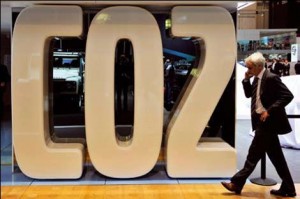Increasingly severe CO2 standards in Europe requiring average fleet emissions of 130g/km by 2015 are forcing automaker to undertake a drastic downsizing of vehicles in a market already dominated by relatively small cars.
The regulations backed by tax incentives and special treatment of makers and classes of vehicles have global implications as Asia and the United States debate and institute their own future auto regulations.
The U.S. now is looking at CO2 limits of roughly twice that of the European Union, but all bets are off after 2015 as to what the next regulatory steps are.
What happens in a volatile political and regulatory environment will determine the types of vehicles you can buy – potentially eliminating the vehicle you are driving now– how small remaining vehicles will be, and how much more – and it will be more — you will pay for them.
At risk are the recovery and future profitability of heretofore wealth-creating automakers who in the depressed world economy will have a difficult time passing on the large costs incurred to make already small efficient cars cleaner still.
About 8-10 million cars are expected to be in the less than 130g/km CO2 emission band in Europe by 2015, according to automotive consultancy Frost & Sullivan. That’s about two-thirds of the market, which by definition will come to define the market.
This is resulting in a complex three-dimensional game of chess just underway behind the scenes, as mass marketers will by necessity try to squeak by with minimal investments.
Luxury makers, with their affluent and relatively well-educated customers, have the opposite problem – how much to spend on advanced technologies that the buyer can’t access or even see in terms of traditional luxury features so that they can continue to offer larger sizes, more engine power and more gadgets that define luxury without offending the greenish sensibilities of potential customers. Here, too, makers ultimately face a pricing problem. Too much in price might be too much even for the relatively affluent, or too little in social responsibility will not be enough.
“By 2015, the average car in Europe will be 5 per cent lighter, with 30 per cent lower CO2 emissions,” says Vigneshwaran Chandran of Frost & Sullivan.” Downsizing, gasoline direct injection (GDI), and start-stop will be the key technologies helping original equipment manufacturers (OEMs) achieve emission targets by 2015.”
Premium manufacturers such as Daimler and BMW are likely to use a combination of electric vehicles, hybridization, and downsizing to achieve their 2015 CO2 emission target of 130g/km, while volume manufacturers will use a mix of green technologies such as GDI, VVT and start-stop systems that are already appearing.
Here, Toyota and its Lexus luxury brand appear to have a huge advantage as the undisputed hybrid leaders. In fact, during 2009 in sales in the European market, the world’s largest automaker surpassed both BMW and Mercedes, both speed obsessed, gas guzzling German companies.
How long speed-limitless Autobahns remain so is also questionable – given the green momentum that continues to increase in Europe, election after election. Moreover, once speeds decline, so does the effectiveness of one of the key aspects of German car marketing.
Traditional chess moves are of limited value now. The rules of the game have changed.

